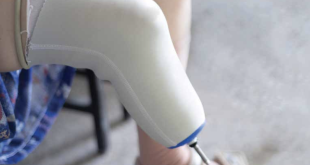Words by Manisha Tamang
Feature section and this article will come after the Wearable Technology article
Pull Quotes:
“Continuous Glucose Monitoring empowers individuals, offering real-time insights into glucose trends, transforming diabetes management.”
“CGM technology revolutionizes diabetes care, providing a proactive approach to health with customizable alarms and data-sharing capabilities.”
“From historical urine tests to real-time monitoring, CGM signifies the remarkable progress in diabetes management, enhancing quality of life for users.”
Continuous blood glucose monitoring (CGM) is a revolutionary way of diabetes management, offering real-time insights into an individual’s glucose levels throughout the day and night. This cutting-edge technology represents a significant leap forward from traditional glucose monitoring methods, providing continuous and detailed data without the need for frequent fingerstick tests. CGM systems utilize sensors placed under the skin to track glucose levels, offering users a comprehensive understanding of their glucose fluctuations, trends, and patterns. This proactive approach empowers individuals with diabetes to make informed decisions regarding diet, medication, and lifestyle adjustments, thereby enhancing their ability to manage their condition more effectively and improve overall health outcomes.
A tiny sensor inserted under the skin measures blood glucose level every few minutes. It can demonstrate changes in the blood glucose level throughout the course of the day and night, allowing for the recording of blood glucose fluctuations.
Benefits of CGM:
- CGM devices automatically display glucose levels every five minutes, utilizing numbers, pictures, and arrows that make it easier to determine if the level is rising, falling, or steady.
- You can program your recording device to sound an alarm if your blood sugar levels rise or fall by a certain amount. This feature can be especially useful for people with “impaired awareness of hypoglycemia,” who can’t feel when their blood sugar levels are low.
- The majority of CGM devices enable the “sharing” of CGM readings in real-time with others (such as family members or caretakers).
- To monitor glucose trends over time, we can even download glucose information from the CGM device to our computer, tablet, or smartphone. For those who use insulin, the doctor can assist in determining how to use this information to modify your insulin dosage as necessary.
- Medical staff can be informed when hypoglycemia and hyperglycemia start to occur.
- Devices that pair an insulin pump with a CGM system can stop sudden unfavorable glycemic reactions to anti-diabetic medication in individuals who are critically unwell.
CGM is most advantageous to people:
- Who require numerous daily insulin injections (basal/bolus insulin therapy) or insulin pump therapy and must modify insulin doses based on their glucose levels
- Who frequently have low blood sugar episodes
- With Nocturnal hypoglycemia- episodes that happen at night
- With significant changes in blood sugar levels and
- With trouble identifying low blood sugar
- Suffering from Type 1 Diabetes
Functioning of CGM
Continuous Blood Glucose Monitoring system consists mainly of 3 components: The biosensor, transmitter and monitor. The biosensor is a tiny cannula penetrating the skin to obtain glucose levels in interstitial fluid. Some biosensors can be used for up to 90 days, while others must be changed every 7 to 14 days. The transmitter of CGM is a small, coin-like, and reusable device that is connected to the biosensor to send the measured data of interstitial glucose levels wirelessly. Finally, the monitor receives the wireless real-time interstitial glucose signal. Some devices allow the data transfer to a smartphone so that patients can bring their own smartphone every time. The monitor can show real-time glucose levels and provide feedback in time when the interstitial glucose level is too high or too low. The smartphone can also send glucose readings to the cloud, and the medical staff can access the data and give advice to the outpatient clinic instantly.
Eversense Continuous Glucose Monitoring System, manufactured by Senseonics, Inc., has been given FDA approval for use in diabetics of 18 years of age and older.This is the first CGM device that has received FDA approval that features a fully implanted glucose sensor that can be worn for up to 90 days.
A tiny biosensor used by the Eversense CGM is inserted subcutaneously by a licensed healthcare professional during an outpatient or inpatient procedure. For up to 90 days following implantation, the sensor continuously monitors the blood glucose levels of diabetic patients. The implanted sensor uses novel light-based technology to assess blood sugar levels and transmit data to a mobile app (monitor) that notifies users when blood sugar levels are too high (hyperglycemia) or too low (hypoglycemia).The sensor is coated with a fluorescent chemical which, when exposed to blood sugar, produces a small amount of light that is measured by the sensor. A compatible monitor or mobile device (such as a smartphone or tablet) that is running a device-specific mobile app receives measurements every five minutes.
Less than 1% of participants in these studies reported having significant side effects related to the implanted sensor. Allergy to adhesives, bleeding, bruising, infection, pain or discomfort, scarring or skin discoloration, sensor fracture during removal, and skin inflammation, thinning, discoloration, or redness are examples of possible negative consequences associated to the insertion, removal, and wear of the sensor.
Drawbacks
The main drawback of CGM is that it measures interstitial glucose levels instead of real-time blood glucose levels, which causes a delay in the management of patients with hyperglycemia and hypoglycemia. Since it takes 15-20 minutes for glucose to be transported from the circulation to the subcutaneous interstitium. If the levels of glucose fluctuate significantly, the lag time should be taken into consideration.
- The biosensors have a brief lifespan.
- CGM needs calibration by fingerstick glucose, which is usually 2-3 times per day.
- There is a limited range of glucose measurements. In Medtronic devices, for example, the range of glucose levels is just 40-400 mg/dL, which restricts the surveillance range in critically ill patients.
- It is costlier than a standard glucose meter.
- The association of blood and interstitial fluid glucose levels in patients with severe global edema, such as those with hypoalbuminemia and hepatic failure, is still not supported by sufficient evidence.
Patient experience of Continuous Blood Glucose Monitoring Device
We interviewed a patient using continuous blood glucose monitoring device. He claims that he has been using this blood glucose monitoring equipment for two years after his general practitioner in the United Kingdom suggested it to him. For 14 days, he keeps the gadget at the back of his upper arm. He was first anxious to accept to wear the device because it made him feel like something was adhering to his body. He claims that this device, which monitors his blood glucose level in greater detail, has greatly improved the quality of his life. He also claims that he can set an alarm to receive notifications whenever the blood glucose level peaks or falls, and the best part is that he doesn’t need to prick his finger in order to check his blood glucose level. With this gadget, he can now monitor his blood glucose levels for 14 days on his phone once it is Bluetooth-connected to the device’s sensor. The only drawback he mentions is that using the sensor on the back of his arm makes it difficult for him to perform some of his routine tasks. For this reason, he attaches the gadget in his chest for simple compatibility. And he claimed another drawback is that this equipment is more expensive than typical, conventional glucometers. If I had to pay for it personally, it would have been a trouble, thanks to the NHS that takes proper care of its citizens in the UK, I am able to use it despite the high cost. We may be able to see such devices in the Nepalese market too in the coming years.
Conclusion
Continuous glucose monitoring (CGM) technology has emerged as a revolutionary tool in diabetes management, providing unparalleled insights into glucose levels. This cutting-edge system, employing sensors placed beneath the skin, offers a real-time understanding of glucose fluctuations, empowering individuals with diabetes to make informed decisions about their health. The benefits of CGM, including real-time glucose readings, customizable alarms, data-sharing capabilities, and glucose trend analysis, significantly enhance the management of diabetes, especially for those requiring insulin therapy or experiencing frequent low blood sugar episodes. Looking back at the historical methods of diagnosing diabetes through tasting urine to detect its sweetness, CGM stands as a testament to the remarkable progress in diabetes management, providing real-time insights that were once unimaginable. While traditional blood glucose meters and urine tests remain crucial diagnostic tools, the advent of CGM marks a significant leap in diabetes care, revolutionizing how individuals monitor and manage their condition, ultimately striving for better health outcomes and improved quality of life.
Let us paste the following as separate boxes: (Please remove the numbering)
- Past Tasting Of Urine:
The history of diabetes dates back to antiquity. The disease, however, remained incredibly puzzling to medical professionals throughout that time due to a lack of diagnostic tools, inadequate anatomy and pathophysiology knowledge, and other factors. In 1500 BC, diabetes was first recognized. The word “diabetes” is derived from the Ancient Greek verb “pass through,” which was meant to refer to frequent urination. Three thousand five hundred years ago, an Egyptian papyrus noted this trait of excessive urine. Galen, a Roman physician, described it as “urine diarrhea” 1900 years ago. Someone noticed that diabetics’ urine attracted ant about 2500 years ago. For individuals with uncontrolled diabetes, excess glucose often spills into the urine, leading to a higher sugar content. This sweet-smelling urine can attract ants due to their natural inclination toward sugary substances. The presence of ants around urine might serve as an indirect indicator of elevated sugar levels in diabetic individuals. However, it’s essential to note that while ants being attracted to urine can potentially hint at high sugar levels, it’s not a definitive diagnostic indicator for diabetes. In the middle ages, the only means to diagnose diabetes was by tasting the urine samples orally. In order to depict the sweet flavor of diabetic patients’ urine, English physician John Rolle later added the Latin word “mellitus” to the name diabetes in the 1700s. In Latin, the word “Mellitus” means “sweetened with honey”. Starting from the 1950’s, patients roughly estimated the level of sugar in their blood by testing their urine with chemical tests that they could do at home. Blood glucose testing was introduced in the 1980s, allowing patients to finally understand when their blood sugar levels were too low as opposed to just too high.
- Methods for checking blood sugar level(Whole Page)
Glucose meter
Using a little sample of blood from the fingertip, we can use a blood glucose meter to check blood glucose levels at home. No particular blood glucose meter is superior to others. The best glucose meter is selected on the basis of costs, usability, and accuracy; it should be one that has been accepted by either the US Food and Drug Administration (FDA) or the International Organization for Standardization (ISO). The biggest drawback of fingerstick blood glucose testing is that it can only identify one instant blood glucose and does not represent long-term day-to-week blood glucose levels. The type of blood glucose strip and meter can have an impact on the accuracy of BGM, among other variables. The use of outdated strips, incorrect strip storage (exposed to high temperatures and humidity), inadequate skin washing, illness, and consumption of vitamin C and acetaminophen can all result in inaccurate readings.
Urine glucose test; Glucosuria test; Glycosuria test
Urine often does not contain glucose. Urine glucose levels should be between 0 and 0.8 mmol/l (0 and 15 mg/dL). Having glucose in the urine is referred to as glucosuria. For conducting this test, patient urine is applied to a dipstick with a color-sensitive pad. Depending on the level of glucose, the dipstick’s color changes. Patients should be informed that the results can change if certain drugs are consumed. Additionally, diabetes, pregnancy, and renal glycosuria all cause glycosuria.
Serological test
- Fasting Blood Sugar Test
This measures your blood sugar after an overnight fasting or fasting for at least 8- 10 hours. A fasting blood sugar level of 110 mg/dL or lower is normal, 110 to 125 mg/dL indicates you have prediabetes, and 126 mg/dL or more is considered to have diabetes.
- Glucose Tolerance Test
This checks your blood sugar levels before and after consuming a glucose-containing liquid. In order to ascertain your fasting blood sugar level, you must fast (not eat) the night before the test. After consuming the liquid, your blood sugar level will be monitored an hour, two hours, and perhaps three hours later. A blood sugar level of 140 mg/dL or less at two hours is regarded as normal; 140 to 199 mg/dL denotes prediabetes; and 200 mg/dL or above denotes diabetes.
- Random Blood Glucose
You don’t have to be in a fasting state for taking this test; you can take it whenever you like. Diabetes is diagnosed when the blood sugar level is 200 mg/dL or greater.
- Two hour- Postprandial glucose
This checks blood sugar levels two hours after a meal.
- HbA1c ( Glycosylated hemoglobin ) Test
HbA1c ( Glycosylated hemoglobin ) checks average blood glucose level over the past three months. Level of HbA1c below 5.7 percent is an indication of good diabetic control and level above 5.7 percent indicate poor diabetic control. The higher the percentage, the higher your blood sugar levels have been.
Interpretation
- A normal A1C level is below 5.7%
- Prediabetes is between 5.7 to 6.4%.
- Type 2 diabetes is above 6.5%
Having prediabetes is a risk factor for getting type 2 diabetes. Pre-diabetic individuals may require retests every year.
The A1C goal for many people with diabetes is below 5.7. Therefore, it is advised that those who have diabetes do this test twice a year. This should be done every three months for people who have just been diagnosed or whose medications have just changed.
Limitations: While the HbA1c level shows the average blood sugar over the previous three months, it does not account for fluctuations in blood sugar. A continuous glucose monitor (CGM) is a device designed to monitor interstitial glucose levels using a minimally invasive subcutaneous sensor in order to address these problems.
 Medicosnext
Medicosnext




